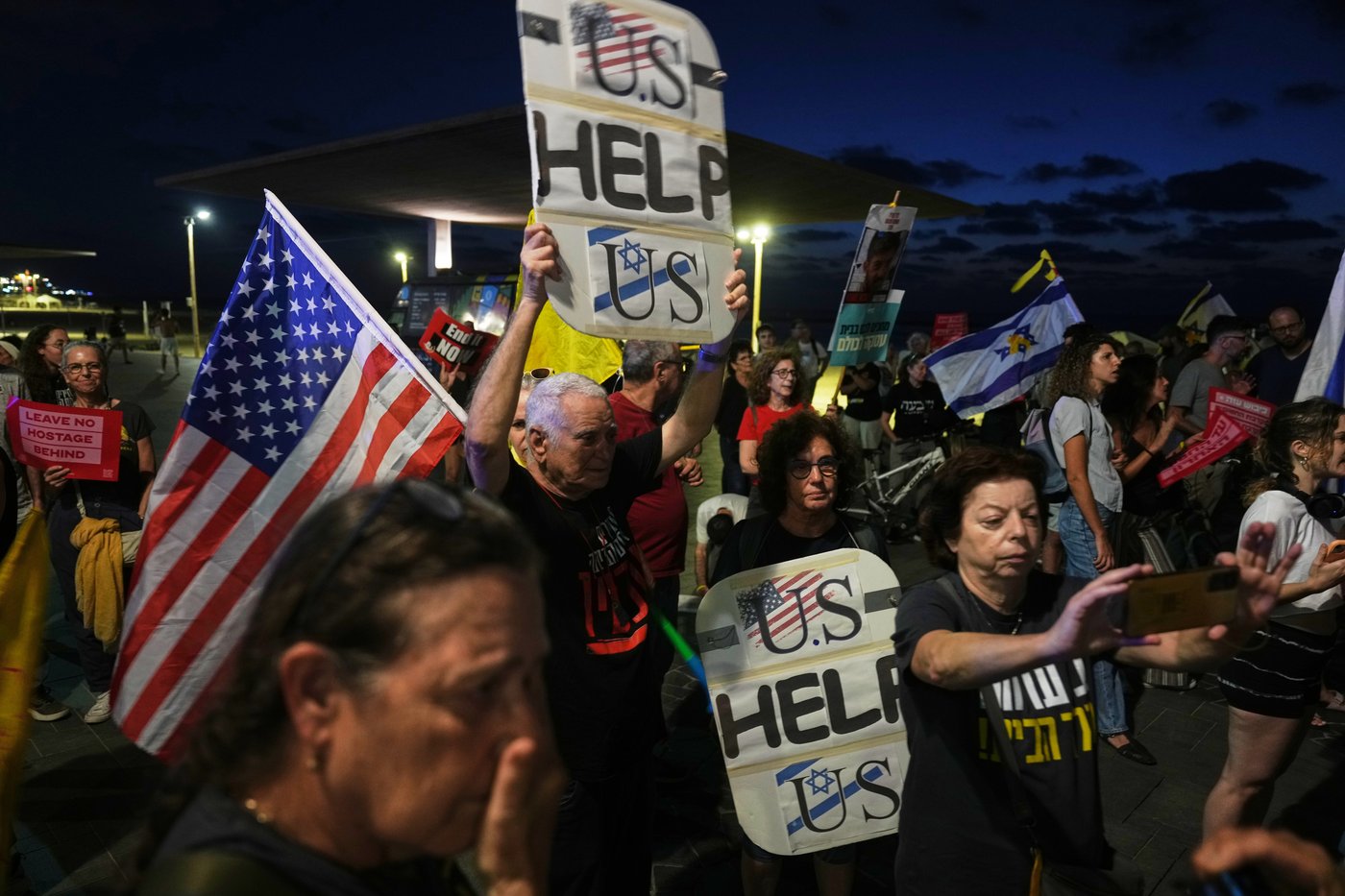
A weakened and isolated Hamas faces pressure to accept Trump’s peace plan for Gaza
JERUSALEM (AP) — Israeli Prime Minister Benjamin Netanyahu may have finally outmaneuvered Hamas.
After facing months of genocide accusations, pariah status and global pressure to halt the war in Gaza, Netanyahu has agreed on a ceasefire plan with U.S. President Donald Trump.
The 20-point plan, unveiled by Trump and Netanyahu at the White House, greatly favors Israel.
Hamas says it is still studying the plan and will respond soon. But with Trump rallying international support for it, including from Hamas’ closest allies, the Islamic militant group could have a tough time refusing the proposal.
“Instead of Hamas isolating us, we turned the tables and isolated Hamas,” Netanyahu boasted in a social media video before leaving Washington.
Here’s a closer look:
Netanyahu’s vision of ‘total victory’
Throughout nearly two years of war, Netanyahu has promised to push ahead until “total victory” – not only returning hostages held by Hamas and defeating the group on the battlefield, but pushing it out of power and destroying its military capabilities.
Given Hamas’ deep roots in Palestinian society, critics have derided this vision as unrealistic. But Trump’s plan largely validates this goal.
Hamas would have to release all hostages, alive and dead, within days of the plan taking effect. It would be forced to disarm and turn over power to a group of apolitical technocrats, supervised by an international body led by Trump and former British Prime Minister Tony Blair.
Israel would maintain an open-ended military presence inside Gaza, along its border with Israel. An international force, comprised largely of troops from Arab and Muslim countries, would be responsible for security inside Gaza. The U.S. would lead a massive internationally funded reconstruction effort in Gaza.
The plan envisions an eventual role for the Palestinian Authority – something Netanyahu opposes. But it requires the authority, which administers parts of the West Bank, to undergo a sweeping reform program that could take years to implement.
The Trump plan is even more vague about a future Palestinian state – another nonstarter with Netanyahu. While it refers to a possible “credible pathway” to a two-state solution, the language is unclear and there are no timelines, leaving the door open for Netanyahu to delay or ignore the issue.
In his social media video, Netanyahu insisted he had not agreed to a Palestinian state. “It’s a danger to Israel and of course we won’t agree to it,” he said.
So what’s in it for Hamas?
Hamas, which triggered the war on Oct. 7, 2023, can claim some victories under the plan.
Most critically, it requires Israel to release hundreds of Palestinian prisoners, including some 250 who are serving life sentences for convictions in deadly attacks on Israelis. Such releases are painful and unpopular for the Israeli public.
Palestinians, however, view the prisoners as heroes and victims in a struggle against Israeli occupation, and any release would be seen by the Palestinian public as a major accomplishment.
Hamas can also claim that it forced Netanyahu to acknowledge Palestinian statehood aspirations, even if the wording in the plan is vague.
Israel also made other concessions: Trump and Israel abandoned a plan to push Gaza’s 2 million Palestinians out of the territory. The new proposal says all Palestinians can stay, and anyone who decides to leave will be allowed to return.
Israel also pledged not to annex or resettle Gaza – a dream favored by Netanyahu’s ultranationalist coalition allies. That comes after Netanyahu, under U.S. and Arab pressure, appears to have dropped his threats to annex the West Bank.
The Trump plan does not mention the West Bank. Arab officials, speaking on condition of anonymity to discuss the closed-door negotiations, said such language was removed at Israel’s request.
An offer it can’t refuse
Despite its small gains, Hamas appears to come out the big loser under the Trump plan. Yet it may not be able to refuse the offer. Trump told reporters at the White House on Tuesday that Hamas has “three or four days” to respond to the proposal.
After two years of war, Hamas has suffered heavy losses and wields only a small fraction of the power it once held. While it’s difficult to assess its popularity in Gaza, it is clear that many in the devastated territory want the war to end at any cost.
In addition, its main allies in the region — Iran and the Lebanon-based militant group Hezbollah — have been greatly weakened by Israeli and American attacks.
Arab countries’ expressions of support for the proposal also could back Hamas into a corner.
A joint statement by Arab and Muslim countries welcomed the proposal and expressed their readiness to work toward finalizing and implementing it. They included Turkey, Egypt and Qatar – which have good working ties with Hamas – and other influential countries, such as Jordan, the United Arab Emirates, Indonesia, Pakistan and Saudi Arabia.
Still, the text of the proposal released by the White House on Monday raised reservations among some Arab countries, Arab officials told The Associated Press.
They said the text had been changed from what they had discussed with Trump previously to make it more favorable to Israel. They pointed to the vague terms about the withdrawal of Israel’s troops, the lack of a timeframe for allowing the Palestinian Authority to govern Gaza and the lack of a clear pathway to a state.
The officials said their countries were in touch with U.S. officials about the changes. They spoke on condition of anonymity to discuss the behind-the-scenes talks.
That may give Hamas room to try to negotiate more favorable changes into the proposal.
But weakened by war, and increasingly isolated in the region, it may have no choice but to go along with the plan.
___
AP correspondent Samy Magdy contributed reporting from Cairo.




Join the Conversation!
Want to share your thoughts, add context, or connect with others in your community?
You must be logged in to post a comment.


















